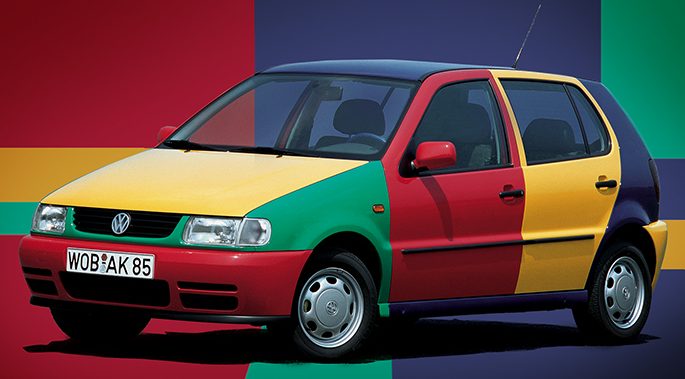Nearly half of American drivers believe red cars cost more to insure. That's 44% of us walking around convinced that cherry red Corvette owners are getting hammered at renewal time.
Here's the plot twist: you won't pay insurers for a myth that isn’t real‼️
"I know red cars are more expensive" becomes the automotive equivalent of an old wives' tale, passed down through generations like a family heirloom nobody wants.
But here's what the insurance industry doesn't want you spending sleepless nights over: your car's color has absolutely zero impact on your premiums. None. Zilch. The only thing inflated about red car insurance rates is the myth itself.
The Great Color Con
When I tell clients their Ferrari red sedan won't cost them an extra penny compared to its silver twin, the relief is immediate. Then comes the inevitable question: “So what the heck does affect my rates?”
Smart question. Insurance companies are data driven machines, crunching numbers on everything that predicts risk. They care about your driving record, not your paint job. Your ZIP code matters more than your color choice. The year you were born carries more weight than whether you chose "midnight black" or “arctic white.”
Here's what keeps underwriters awake at night:
- Your vehicle's make and model (a Honda Civic versus a Dodge Challenger tells a story)
- Safety ratings and crash test scores (five stars beats two stars every time)
- Theft statistics (some cars disappear faster than others)
- Repair costs (luxury parts cost luxury money)
- Your driving history (those speeding tickets aren't decorative)
Color never makes the list. Insurance companies don't even ask about it on applications. Progressive openly states they won't inquire about color because it's irrelevant to risk calculations.
The Safety Plot Twist
While color won't hit your wallet through insurance premiums, it might save your life. Research from Monash University's Accident Research Centre analyzed real crash data and discovered something fascinating: white cars are 10% less likely to crash during daylight hours compared to darker vehicles.
The visibility factor is real. Black cars show 12% higher crash risk than white ones. Gray and silver vehicles fall somewhere in the middle. It's not about attracting police attention or insurance discrimination, it's pure physics. Darker colors blend into shadows, overcast skies, and twilight conditions.
A New Zealand study took this further. esearchers found silver cars were 50% less likely to be involved in serious injury crashes compared to white vehicles. Meanwhile, brown and green cars showed significantly higher injury risks. The data suggests visibility plays a crucial role in avoiding accidents altogether.
Where Color Can Cost You
Before you celebrate your myth-busting victory, understand there's one exception that'll make your wallet whimper: custom paint jobs.
That showroom stock red won't cost extra, but a $15,000 custom metallic flame job? Different story entirely. Custom paint work increases your vehicle's value, which directly impacts:
- Comprehensive coverage costs (higher value means higher premiums)
- Replacement expenses (good luck finding matching paint after a fender-bender)
- Specialty repair requirements (not every body shop handles custom work)
"My paint job is factory" becomes the magic phrase. Stick with manufacturer colors and you're in the clear.
The Real Premium Drivers You Should Worry About
Instead of obsessing over color choices, focus on factors that genuinely impact your rates:
- Your driving record dominates everything. One DUI can double your premiums. Multiple speeding tickets create a pattern insurers hate. Clean records earn discounts that dwarf any mythical color penalties.
- Location determines base rates. Urban areas with higher accident frequencies and theft rates cost more. Moving from rural Montana to downtown Chicago will shock you more than any paint choice ever could.
- Credit scores matter in most states. Poor credit can increase rates by hundreds of dollars annually. This correlation between financial responsibility and driving risk remains controversial but widely used.
- Vehicle age and safety features count. Newer cars with advanced safety systems often qualify for discounts that older vehicles can't touch, regardless of color.
Choose Colors for You, Not Your Insurer
Pick the color that makes you smile when walking to your car. Choose what complements your style, matches your personality, or simply catches your eye in the showlight.
Your insurance company genuinely doesn't care whether you drive fire engine red or banker conservative beige. They're too busy analyzing your actual risk factors to worry about your aesthetic preferences.
The next time someone warns you about red car insurance costs, share the truth: it's the biggest myth in automotive finance. Save your premium reduction energy for maintaining a clean driving record, choosing safe vehicles, and shopping around for competitive rates.
Because in the end, the only color that affects your insurance rates is green, and that's the money you'll save by focusing on what actually matters.

Comments (0)
Please login to join the discussion
Be the first to comment on this article!
Share your thoughts and start the discussion